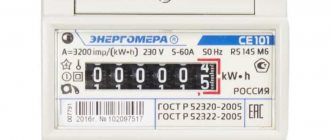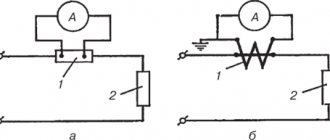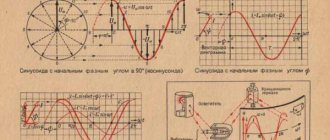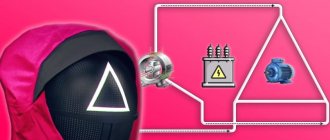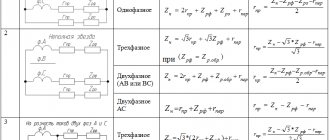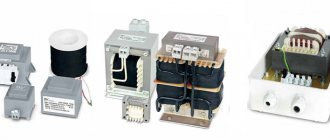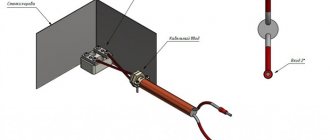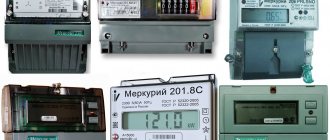The Mercury 230 meter is a three-phase device for determining the consumed electrical energy in 3 or 4 wire circuits at several tariffs. Depending on the design, the device takes into account the active and reactive components of electricity and is suitable for installation at any individual consumption facilities, allowing the possibility of autonomous operation or as part of a centralized automatic control system.
Type of meter – Mercury 230 ART-03
Design and principle of operation
The accounting principle involves recording incoming pulses and then converting them into information processed by an analog-digital module and displayed by a liquid crystal display or mechanical counting device. Depending on the design and configuration, the data is transmitted to a remote computer via a modem and stored in the internal memory of the electricity meter.
The device is made of the following parts:
- composite body;
- an electronic unit, including measuring and fixing devices, a memory board, and a liquid crystal display;
- mechanical counting unit (for AM version);
- contact connection unit, closed with a removable cover.
How to avoid 4 problems when operating three-phase Mercury meters
Most often, problems with the operation of Mercury meters concern the liquid crystal display (LCD). A malfunction of the device is indicated by an error code on the device. They can be temporary or permanent. Incorrect operation of the metering device is corrected.
- If the memory function is impaired, it is necessary to find out the associated code and reprogram the option.
- If a CS program error is detected, you need to urgently send the device to the manufacturer. Most of the identified violations of the CS program will be eliminated only there.
- The tarifficator byte KS error can be easily corrected by restarting the device.
- The inaccuracy of the CS of the array of accumulated energy registers is eliminated by resetting the energy registers.
Specifications
| Characteristics | Magnitude |
| Accuracy class | 1 according to GOST 31819.21-2012; 0.5S according to GOST 31819.22-2012; 1 or 2 according to GOST 31819.23-2012. |
| Rated voltage (Unom), V | 3×230/400 or 3×57.7/100 |
| Set operating voltage range in relation to Unom | 0,9 — 1,1 |
| Extended operating range in relation to Unom | 0,8 — 1,15 |
| Limit operating range in relation to Unom | 0 — 1,15 |
| Base/maximum current for directly connected meters, A | 5(60) or 10(100) |
| Rated/maximum current for meters connected via a transformer, A | 5/7,5 |
| Rated frequency value, Hz | 50 |
| Starting current (sensitivity), mA, no more: | |
| for a meter with Ib=5 A for a meter with Ib=10 A for a meter with In=5 A | 20 40 5 |
| Counter constant, imp./(kW*h): | |
| in telemetry mode in verification mode | 500 or 1000 or 5000 16000 or 32000 or 160000 |
| Accuracy of meter clocks at normal temperature in the on and off state, s/day | ±0,5 |
| Measuring the accuracy of the clock in the on and off state, s/°C/day: | |
| in the temperature range from -10 to +45°C in the remaining operating temperature range | ±0,15 ±0,2 |
| Liquid crystal indicator: | |
| number of displayed digits unit price of the least significant digit when displaying energy, kWh | 8 0,01 |
| Total power consumed by the current circuit, V*A, no more | 0,1 |
| Active power in each meter voltage circuit, W, no more | 2 |
| Total power consumed by each voltage circuit, V*A, no more | 10 |
| External interface supply voltage range, V: | |
| CAN, RS-485 GSM modem | 5,5 — 12,5 7 — 9 |
| External backup voltage range, V | 5,5 — 9 |
| Average current consumption from external power supply of CAN and RS-485 interfaces, mA, no more | 30 |
| Additional current consumption of meters from an external backup power source, mA, no more | 150 |
| Maximum number of valid tariffs | 4 |
| Overall dimensions of the meter, mm, no more: | |
| height width length | 258 170 74 |
| Meter weight, kg, no more | 1,5 |
| Limit operating temperature range, °C | -40… +55 |
| Limit range of storage and transportation, °C | -50… +70 |
| Average time to failure, hours. | 150000 |
| Standard service life, years | 30 |
| Calibration interval, years | 16 |
| Price, increased rub. | from 2000 |
Overall dimensions of the meter - Mercury 230
Connection diagrams
Semi-indirect connection diagram
The connection diagram of the meter through Mercury 230 current transformers provides several ways to turn it on, differing in the switching of linear conductors: semi-indirect connection; direct connection; indirect method.
Semi-indirect inclusion
Semi-indirect is a type of connection in which only one converter is used to take readings - a current transformer, manufactured as a separate module. This device allows you to reduce the value of the current component that directly affects the actuator unit of the electric meter. With its help, it is possible to expand the range of capacities to be accounted for in existing electrical networks. In addition, their use guarantees the normal functioning of the equipment connected to them.
Direct connection
The simplest connection diagram for Mercury 230 meters uses the principle of direct connection of its working windings to the break in the phase supply wires. Electric meters can be connected in this way only if the current flowing in the controlled circuits does not exceed 60 Amperes. This restriction applies to each of the phases that are subject to mandatory accounting.
This method is used extremely rarely, since with three-phase power supply, starting currents in electric motors, for example, often reach hundreds of Amperes.
Indirect inclusion
Indirect connection using 10 conductive wires
With an indirect connection, the electric meter is included in the controlled circuit according to several circuits developed specifically for this method. One of them is connection through ten separate conductive wires. With its help, it is possible to implement separate metering of current and voltage, which increases the efficiency and safety of the device in all modes. The disadvantage of this method is the large number of switching elements, which reduce the reliability of the counter performing its functions.
This category includes a circuit that allows you to connect the meter to a three-phase three-wire network using 2 current transformers and 2 voltage converters. When using it, it is possible to slightly reduce the number of necessary switchings and increase the reliability and safety of operation of accounting equipment.
Advantages of the device
The advantages of the model are the following qualities:
- reliable constructive protection against data falsification;
- accounting data for several tariffs (depending on the design);
- multifunctional capabilities;
- high accuracy of data recording;
- affordable price;
- a large selection of modifications, with the ability to select the appropriate one depending on the expected operating conditions - the availability of functions for remote information transfer and connection to a centralized control network;
- ease of installation and connection;
- convenience of taking readings;
- Possibility of individual adjustment to the maximum characteristics of the network.
Additional counter features
Based on the modification, the device has additional functions:
- Forward and reverse metering of electricity;
- Energy metering for each phase;
- Saving an archive of received capacities at step-by-step intervals from 1 to 45 minutes. The archive storage time reaches 85 days;
- The maximum value of morning and evening power is recorded;
- Current quality is monitored;
- Losses and magnetic influence are taken into account - an entry is made in the log.
We recommend: Which electricity meter is better?
Types of counter
The device is produced in two basic versions:
- AR – a model that takes into account the active and reactive components of electricity at several tariffs, equipped with a liquid crystal display;
- AM is a meter with a mechanical reading device that summarizes readings according to a single tariff plan.
The AR version is produced in the following modifications:
- 00 R – transformer connection model with a working (maximum) electric current of 5 (7.5) A and an RS-485 interface;
- 01 R – direct connection device with current characteristics of 5 (60) A;
- 02 R – differs from the previous modification in the magnitude of the electric current – 10 (100) A;
- 03 R – product with an electric current of 5 (7.5) A;
- 01 CL, 02 CL, 03 CL - three similar devices in terms of technical characteristics, but equipped with a CAN interface and a PLC modem.
The AM version is represented by the following modifications:
- 00 – connection requires the use of a transformer, current characteristics are 5 (7.5) A;
- 01 – connects directly, electric current value – 5 (60) A;
- 02 – current parameters differ from the previous model – 5 (100) A;
- 03 – version with current characteristics similar to modification 00.
Performance characteristics – AM
The listed modifications differ in accuracy class and constant value. More details about the technical characteristics and configuration of the manufactured versions are indicated in the passport documentation.
Why do we need TTs?
Connecting three-phase meters through Mercury current transformers makes it possible to expand the range of measured parameters to several hundred Amperes. This can be achieved through the use of converting devices with a fixed transformation ratio (most often it is 20). Since Mercury type meters are designed for currents of no more than 60 Amperes, the use of a transformer allows readings to be taken when their values in the supply circuits reach many hundreds of Amps.
For other TT models, the transformation ratio has “its own” values (5, 30, 40, etc.).
The choice of a specific converter sample depends on the calculated level of current load in the consumer network. If the current value does not exceed 60 Amperes, which happens extremely rarely, direct connection of the meter to the controlled circuit is allowed.
Taking readings
To make the device with a mechanical roller display for taking readings, it is enough to write down the whole value of the number of kWh, without leading zeros and decimals (the right roller is red). After subtracting past readings and multiplying by the tariff amount, the amount to be paid is determined.
For LCD execution, data is taken and calculated separately for each tariff plan. To do this you need:
Taking readings from the meter - Mercury 230
- Wait for the automatic appearance of the consumption indicator value for tariff 1, indicated on the T1 display, or select it by briefly pressing the enter button.
- Write down the value, without taking into account two (one or there may be no fractional value at all, depending on the design) fractional digits to the right of the point (red frame in the photo).
- Subtract last month's figures and multiply by the price.
- Repeat the operation for each of the tariff plans.
- Sum the values.
You can watch the video for more information about taking readings:
Standard features of Mercury 230 (two-tariff)
- Measuring and storing data on consumed electricity, as well as its visualization on the display for the following time periods:
- From last reset;
- Within 24 hours;
- Within 30 days;
- For the current year;
- For the last year.
- The ability to meter electricity according to two tariff plans, for four types of days and 16 time zones.
- Ability to program monthly according to a new tariff schedule;
- Recording the following parameters:
- Instant calculations of any capacity;
- Actual parameters of potential difference, phase current, angles between phases;
- Electrical network frequency;
- Power factors separately by phase and in total.
- Protection control is carried out (maximum). There is a way to set the maximum allowable load power limit. If this limit is exceeded, the counter makes a note indicating the exact time value when the excess occurred.
- The load can be controlled via a digital output.
- The presence of event logs, the following values are recorded in it:
- The time when the meter was connected to/disconnected from the network;
- Disappearance and appearance of phases;
- Closing and opening the device;
- Correction of tariff schedule;
- Exceeding limits.
Solving other problems
The connection of stranded wires has a number of features.
Connecting many wires
Options for connecting two contacts were discussed above. If we are talking about connecting multiple contacts, it is recommended to choose among the following options (in order of priority - from the best method to the worst):
- Wago terminal blocks;
- crimping with sleeves;
- rations;
- twists;
- insulating tape.
The rules for docking using the indicated methods, as well as their advantages and disadvantages, are discussed above.
Docking of cores with different sections
To combine cores of unequal cross-sections in a junction box, you will need Wago terminal blocks, although you can get by with standard terminal blocks - the latter option will be cheaper. In this case, it is necessary to secure the cores tightly using a screw or lever.
Note! If the wires not only have different sections, but are also made of different metals, you will need special pads, inside of which there is a special composition to prevent oxidative processes. Similar pads are available in the Wago range
Cores with different sections can also be secured by soldering.
Joining of stranded and single-core conductors
The combination of conductors with one and multiple cores is carried out in the same way as all others. In this regard, you can choose any of the above methods, but the highest priority is soldering or terminals (preferably Wago).
Meter with built-in computer
Electronic meters are produced without a rotating wheel, with installed digital displays. Due to their versatility, they have a standard menu where additional settings are located.
The latest models of electricity meters are much better equipped. Several phases can be summed up to them. This is very convenient considering that many consumers switch to two or three tariff plans:
All additional settings allow you to find out in more detail information about consumption at a certain time of day, the operating time of the meter and data on the readings T1 and T2.
The consumer's first impression is that it will be difficult to read information from an electronic meter. To do this, you need to study the manual for the electrical appliance or consult an electrician.
In addition, there are models that do not need to regularly take readings. They are connected to a common central network and send readings to a server at the power company. And you just receive a monthly electricity bill.
The gradual introduction of two-tariff energy metering allows saving on electricity, especially in apartment buildings, as well as optimally distributing energy. But here it’s also worth considering at what hours your consumption is greater and at which times it is less. If daytime consumption is small, and the main load occurs at night, then the Mercury 230 model is perfect.
Read also: Metal hardening oil
How to legally avoid paying for electricity
Nuances of use
Test boxes, as structures of the simplest type, do not require special maintenance, which does not mean they are absolutely reliable. According to the requirements of current regulations, during operation of the IKK it is recommended to regularly tighten the contacts of the screw terminals. During operation, the conductors heat up and become slightly deformed, which causes the connections to loosen.
Such requirements are usually not imposed on boxes with clamp-type contacts. In addition, they are much more convenient to handle, since no additional tool is required to turn off the meter.
Purpose
Three-phase static electric energy meters “Mercury 230AM”, “Mercury 230AM” (hereinafter referred to as meters), are designed for measuring and accounting for active electrical energy of alternating current in three and four-wire alternating current networks with a frequency of 50 Hz.
The operating principle of the meters is based on the conversion of input signals of AC power and voltage from analogue to digital form, followed by calculation of the amount of active electricity and its display on an electromechanical reading device.
The meters provide registration and storage of electricity consumption values at one tariff from the moment of commissioning.
The meters can be operated either autonomously or as part of an automated data collection system.
The meters are intended for indoor use, and can also be used in places that have additional protection from environmental influences (installed indoors, in a cabinet, in a panel).
The meters have a built-in electromechanical reading device (hereinafter referred to as the CU) to display the measured electricity.
The meters are produced with different brands: “Mercury” - for sales with a Russian-language trademark and “Mercury” - for sales with an English-language trademark. Metrological and technical characteristics apply to both brands.
The meters are available in the following modifications: “Mercury 230AM-00”, “Mercury 230AM-01”, “Mercury 230AM-02” , “Mercury 230AM-03” (“Mercury 230AM-03”), differing in base (nominal) and maximum current, rated voltage, accuracy class and meter constant. Distinctive features of meters of various modifications are given in Table 1.
| Basic data | |
| State Register number | 80221-20 |
| Name | Three-phase static electricity meters |
| Model | Mercury 230AM |
| Interverification interval / Verification frequency | 10 years |
| Manufacturer country | RUSSIA |
| Certificate period (Or serial number) | 23.12.2025 |
Basic and additional functions
Let's look at how to take readings from an electricity meter. The device has a 6-digit dial. You need to write down all the numbers up to the decimal point. To calculate energy consumption for a month, you need to subtract from the new readings those that were last month.
Expert opinion
Viktor Pavlovich Strebizh, lighting and electrical expert
Any questions ask me, I will help!
The standard telemetry output allows you to operate an electricity meter as part of an automated accounting system that has the ability to receive accounting information in telemetry pulses; Execution options. If there is something you don’t understand, write to me!
Nuances of use
Test boxes, as structures of the simplest type, do not require special maintenance, which does not mean they are absolutely reliable. According to the requirements of current regulations, during operation of the IKK it is recommended to regularly tighten the contacts of the screw terminals. During operation, the conductors heat up and become slightly deformed, which causes the connections to loosen.
Such requirements are usually not imposed on boxes with clamp-type contacts. In addition, they are much more convenient to handle, since no additional tool is required to turn off the meter.
Meter installation
The device is mounted on a DIN rail. Direct connection is made according to the following scheme:
The following diagrams are used for transformer connections:
The specified device complies with state standards and can be used on the territory of the Russian Federation and in neighboring countries.
